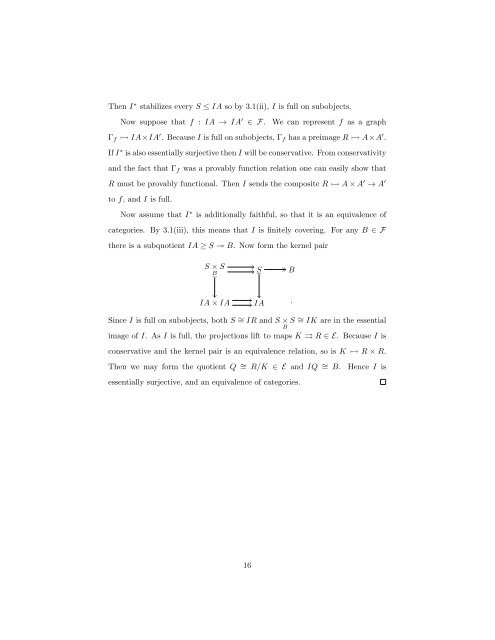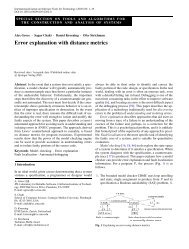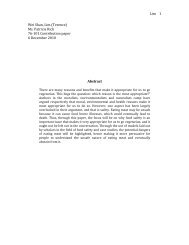A refactored proof of conceptual completeness
A refactored proof of conceptual completeness
A refactored proof of conceptual completeness
You also want an ePaper? Increase the reach of your titles
YUMPU automatically turns print PDFs into web optimized ePapers that Google loves.
Then I ∗ stabilizes every S ≤ IA so by 3.1(ii), I is full on subobjects.<br />
Now suppose that f : IA → IA ′ ∈ F. We can represent f as a graph<br />
Γf ↣ IA×IA ′ . Because I is full on subobjects, Γf has a preimage R ↣ A×A ′ .<br />
If I ∗ is also essentially surjective then I will be conservative. From conservativity<br />
and the fact that Γf was a provably function relation one can easily show that<br />
R must be provably functional. Then I sends the composite R ↣ A × A ′ → A ′<br />
to f, and I is full.<br />
Now assume that I ∗ is additionally faithful, so that it is an equivalence <strong>of</strong><br />
categories. By 3.1(iii), this means that I is finitely covering. For any B ∈ F<br />
there is a subquotient IA ≥ S ↠ B. Now form the kernel pair<br />
S × S<br />
B<br />
<br />
<br />
IA × IA<br />
<br />
<br />
S <br />
<br />
<br />
<br />
IA<br />
Since I is full on subobjects, both S ∼ = IR and S × S<br />
B<br />
∼ = IK are in the essential<br />
image <strong>of</strong> I. As I is full, the projections lift to maps K ⇒ R ∈ E. Because I is<br />
conservative and the kernel pair is an equivalence relation, so is K ↣ R × R.<br />
Then we may form the quotient Q ∼ = R/K ∈ E and IQ ∼ = B. Hence I is<br />
<br />
<br />
B<br />
essentially surjective, and an equivalence <strong>of</strong> categories.<br />
16<br />
.








